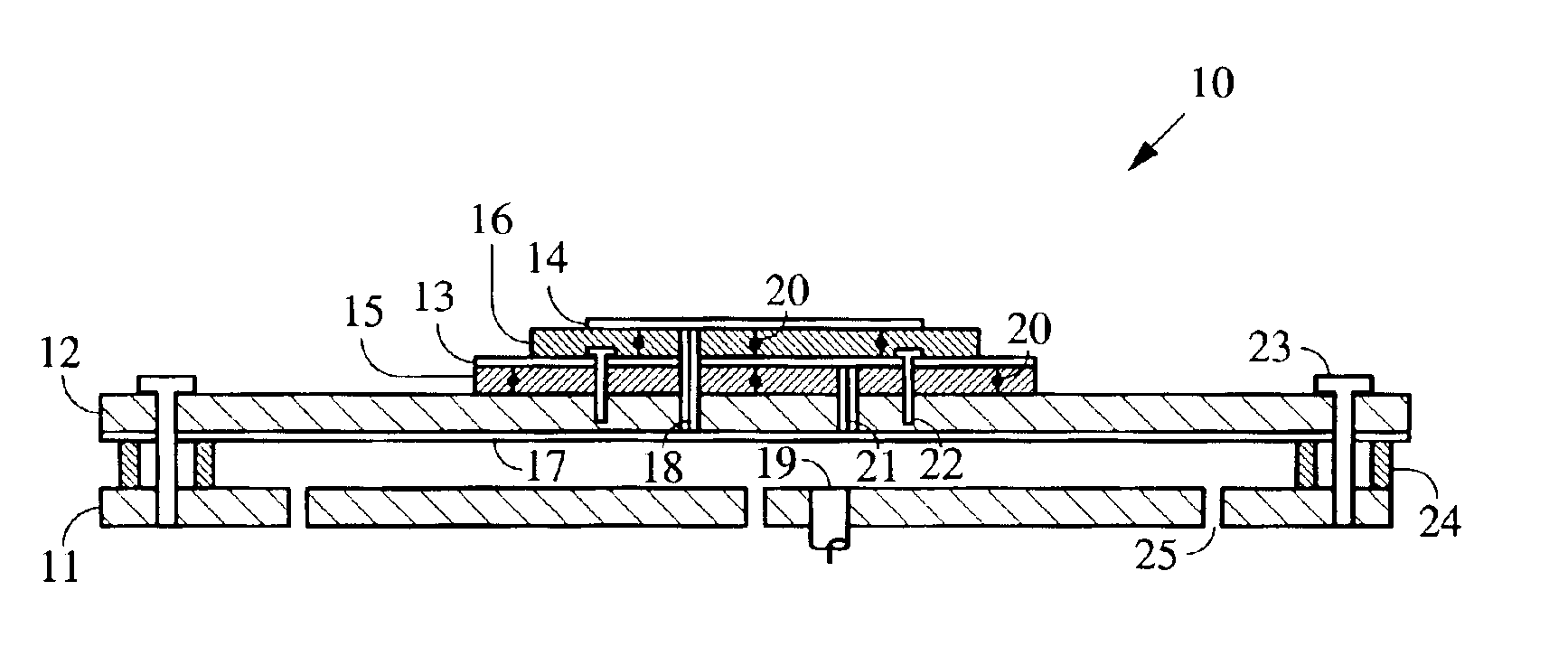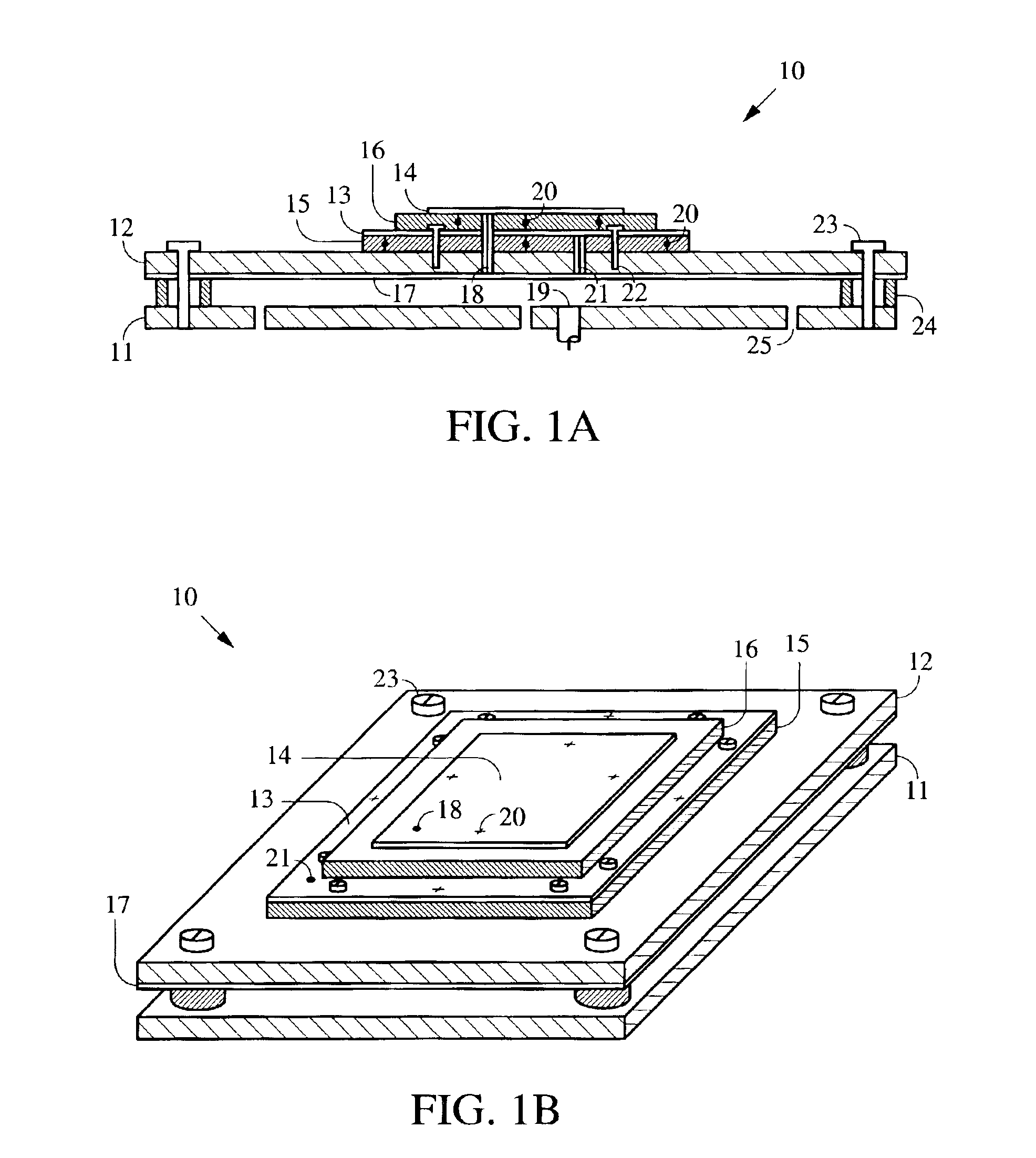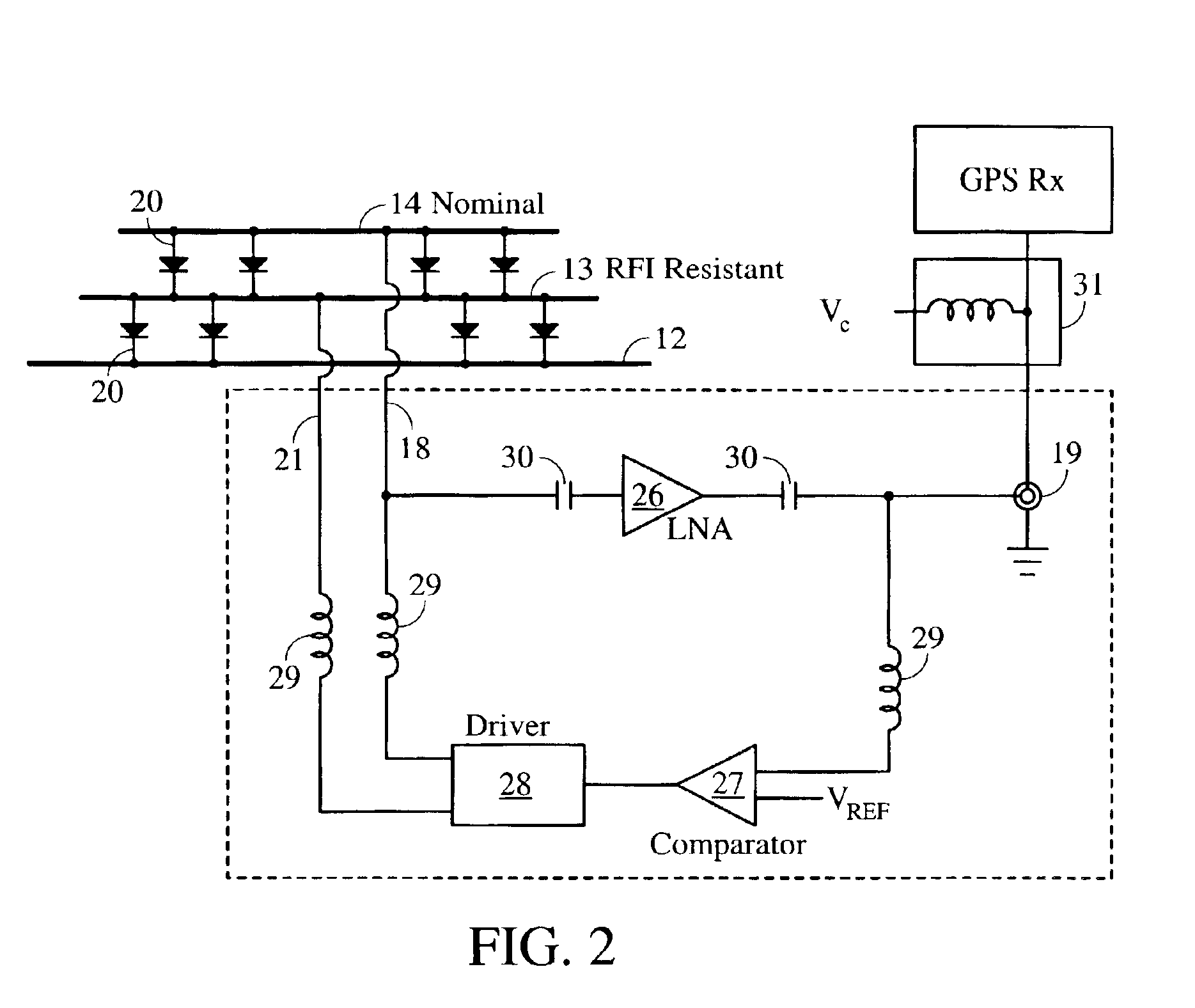Dual-element microstrip patch antenna for mitigating radio frequency interference
a patch antenna and microstrip technology, applied in the field of patch antennas, can solve problems such as disrupting their independent operation, and achieve the effect of less sensitivity and higher sensitivity
- Summary
- Abstract
- Description
- Claims
- Application Information
AI Technical Summary
Benefits of technology
Problems solved by technology
Method used
Image
Examples
Embodiment Construction
[0028]As shown in FIGS. 1A and 1B, an embodiment of the present invention provides a dual-element antenna device comprising two vertically stacked rectangular microstrip patch antenna elements 13 and 14, dielectric substrates 15 and 16, and a conducting ground plate 12. Antenna elements 13 and 14 are stacked above ground plate 12 with substrates 15 and 16 interposed between them. The two patch elements 13 and 14 are fed simultaneously by a common feed 18 located along a diagonal of the rectangular patch elements. The feed 18 is located from the corner of the rectangle of both patches approximately 35 percent of the length of the diagonal. In this configuration, both upper and lower patch elements will be circularly polarized. In addition, the patches are electrically in series with each other. The upper patch 14 operates in the nominal or general purpose mode. When active, the upper patch 14 and the lower patch 13 form a resonant cavity at the frequency of interest, using the upper ...
PUM
 Login to View More
Login to View More Abstract
Description
Claims
Application Information
 Login to View More
Login to View More - R&D
- Intellectual Property
- Life Sciences
- Materials
- Tech Scout
- Unparalleled Data Quality
- Higher Quality Content
- 60% Fewer Hallucinations
Browse by: Latest US Patents, China's latest patents, Technical Efficacy Thesaurus, Application Domain, Technology Topic, Popular Technical Reports.
© 2025 PatSnap. All rights reserved.Legal|Privacy policy|Modern Slavery Act Transparency Statement|Sitemap|About US| Contact US: help@patsnap.com



